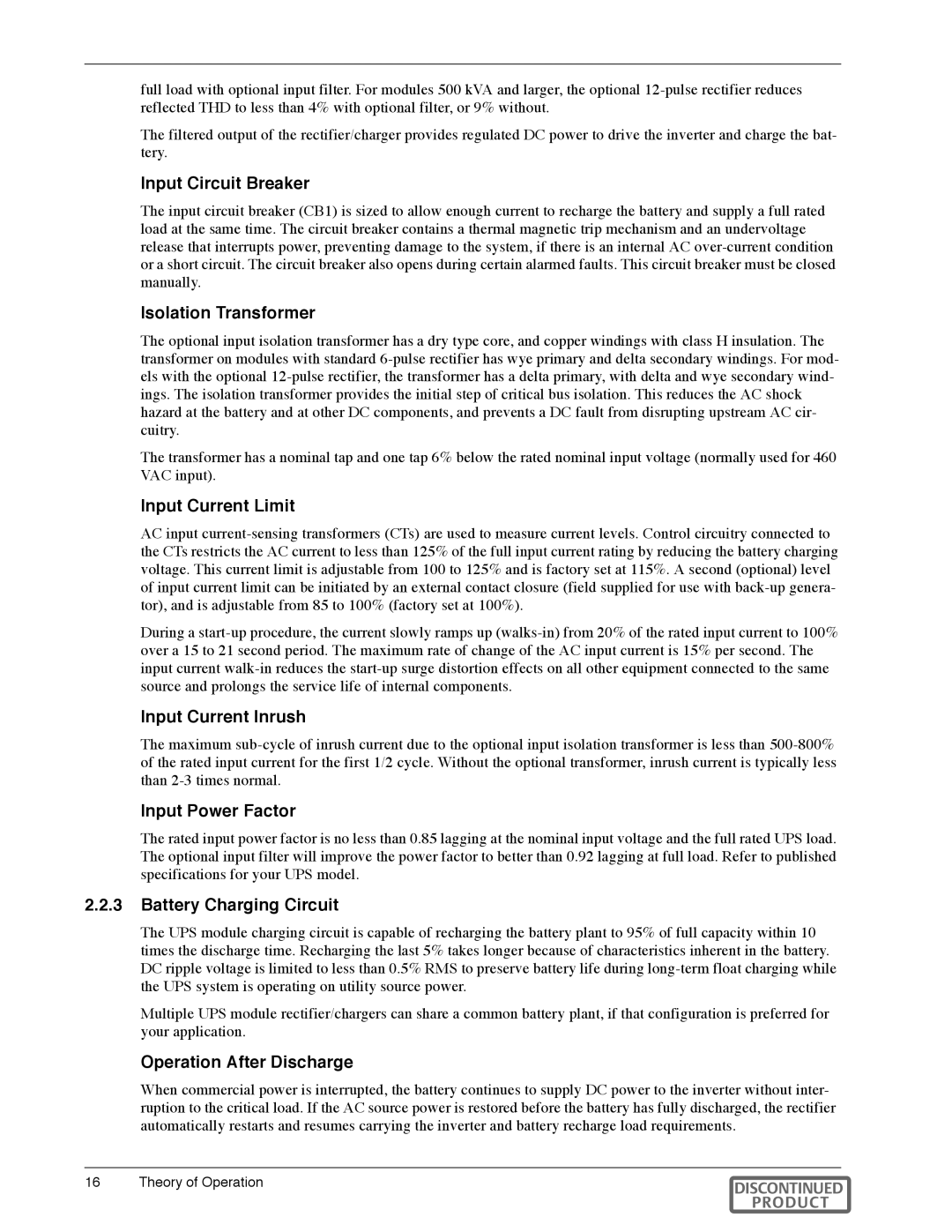
full load with optional input filter. For modules 500 kVA and larger, the optional
The filtered output of the rectifier/charger provides regulated DC power to drive the inverter and charge the bat- tery.
Input Circuit Breaker
The input circuit breaker (CB1) is sized to allow enough current to recharge the battery and supply a full rated load at the same time. The circuit breaker contains a thermal magnetic trip mechanism and an undervoltage release that interrupts power, preventing damage to the system, if there is an internal AC
Isolation Transformer
The optional input isolation transformer has a dry type core, and copper windings with class H insulation. The transformer on modules with standard
The transformer has a nominal tap and one tap 6% below the rated nominal input voltage (normally used for 460 VAC input).
Input Current Limit
AC input
During a
Input Current Inrush
The maximum
Input Power Factor
The rated input power factor is no less than 0.85 lagging at the nominal input voltage and the full rated UPS load. The optional input filter will improve the power factor to better than 0.92 lagging at full load. Refer to published specifications for your UPS model.
2.2.3Battery Charging Circuit
The UPS module charging circuit is capable of recharging the battery plant to 95% of full capacity within 10 times the discharge time. Recharging the last 5% takes longer because of characteristics inherent in the battery. DC ripple voltage is limited to less than 0.5% RMS to preserve battery life during
Multiple UPS module rectifier/chargers can share a common battery plant, if that configuration is preferred for your application.
Operation After Discharge
When commercial power is interrupted, the battery continues to supply DC power to the inverter without inter- ruption to the critical load. If the AC source power is restored before the battery has fully discharged, the rectifier automatically restarts and resumes carrying the inverter and battery recharge load requirements.
16 | Theory of Operation | DISCONTINUED |
|
| PRODUCT |
